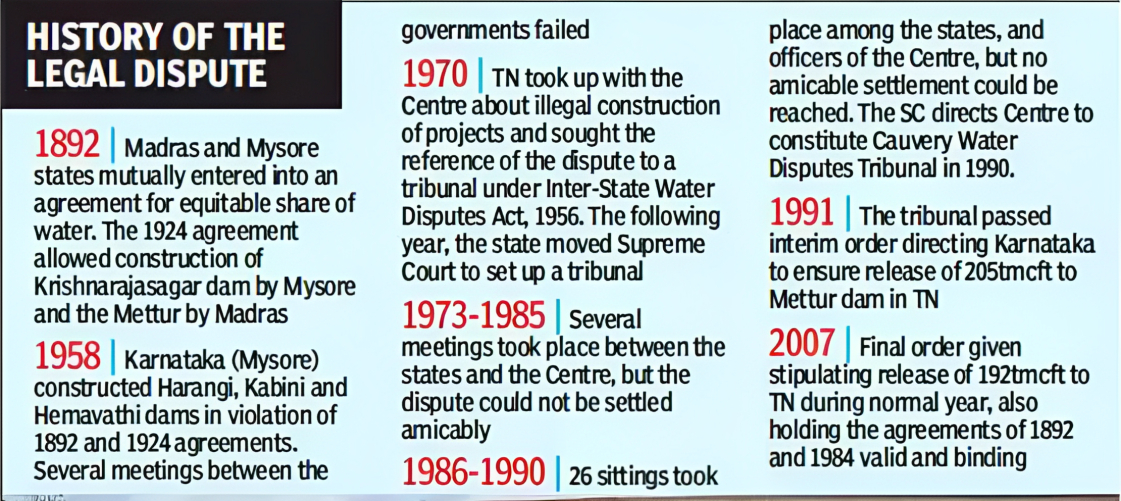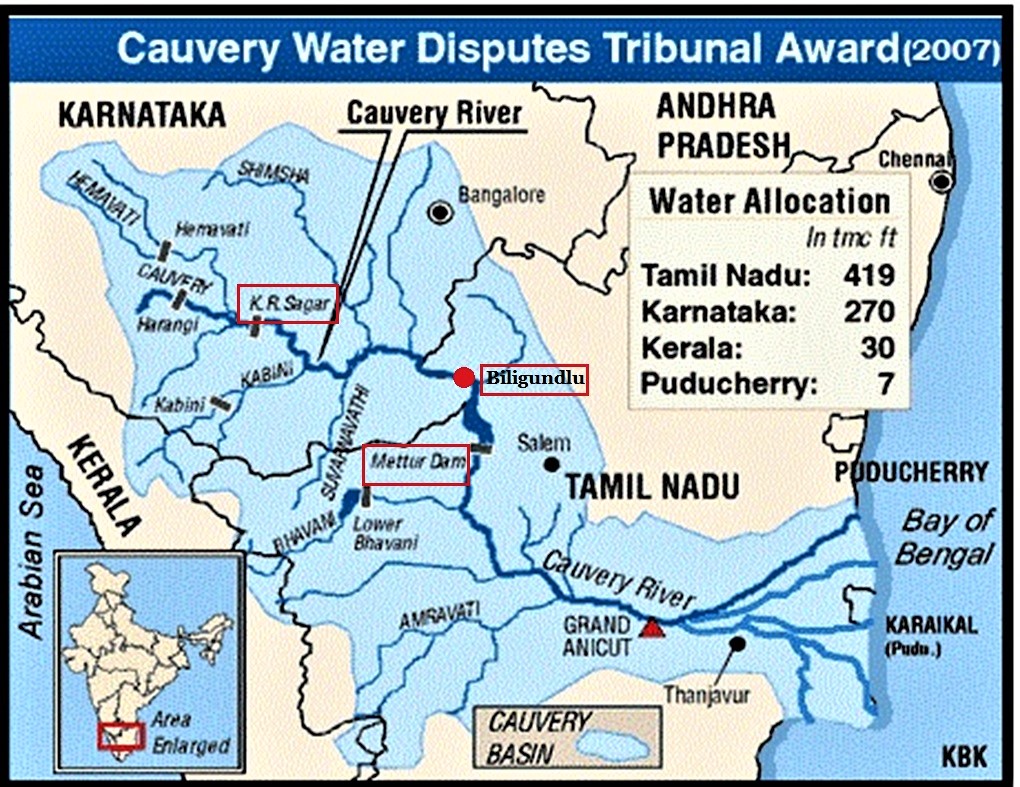7667766266
enquiry@shankarias.in
The Tamil Nadu government has sought the Supreme Court’s intervention to make Karnataka immediately release 24,000 cubic feet per second (cusecs) from its reservoirs.

How did the CWDT evolve?
To know about the Centre and State Powers over Water Resources, click here

What is the current dispute?
Mekedatu, a multipurpose balancing reservoir project at the confluence of the River Cauvery and its tributary River Arkavathi in Karnataka has been contentious for years between Tamilnadu and Karnataka.
|
About Cauvery River |
|
References